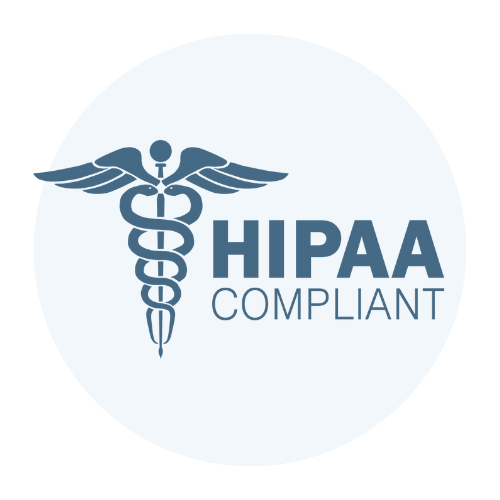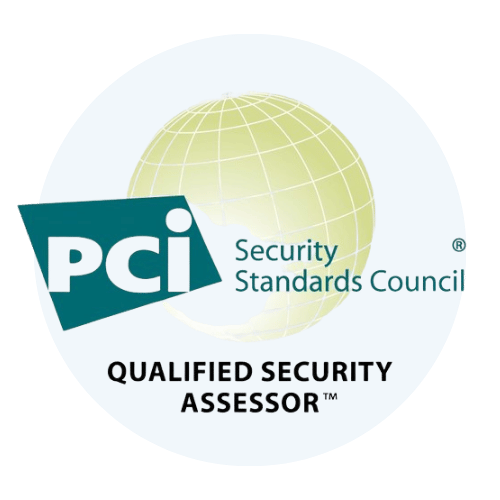Does SOC 2 require data to be encrypted “at rest” or only “in transit“?
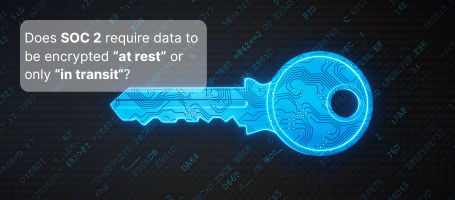
Installing strong firewalls and keeping your antivirus software up to date are excellent protections to promote an effective security posture. However, it would be best if you had other safeguards in addition to these layers of defense. Information is, for instance, particularly vulnerable to attack when it is in transit. Therefore, it is advisable to focus on safeguarding data from endpoint to endpoint, whether “in transit” or “at rest.” End-to-end encryption scrambles all outgoing communications before the data packets leave the device, with only the target device able to make sense of it. Section CC6 of SOC Certification, covering Logical and Physical Access, emphasizes data security and privacy and logical access to software, services, and infrastructure. The standard requires that an organization implement measures to prevent any breaches resulting from malware injection and make corrections if such breaches occur. Since hackers often take advantage of systems that are not secured, having end-to-end encryption in place is one of the best preventive strategies an organization can institute. Encryption Requirements Found in SOC 2 Although SOC 2 standards can sometimes appear strict and intricate, they do not address encryption in any detail. There are no specific encryption requirements listed in the five Trust Services Criteria that make up the backbone of SOC 2. However, it is strongly recommended that your organization emphasize cyber hygiene as the best way to enhance its security posture. Recommended Best Practices Based on SOC 2 Security Criteria As the above recommendations suggest, your organization should always seek to encrypt all information whenever possible as the gold standard of cybersecurity. For more on our SOC 2 compliance services Explore SOC 2 Solutions Additional Considerations The following recommendations are also crucial to remember, depending on the kind of information your business handles or transmits: The Health Insurance Portability and Accountability Act of 1996 (HIPAA) addresses the use and disclosure of protected health information (PHI). If the information you store or transmit is PHI under HIPAA, you should encrypt this data, whether “in transit” or at rest” unless you can demonstrate that you have put some other equally effective protective control in place. Any cardholder information associated with the major credit card brands (Discover, Mastercard, Visa, American Express, or JCB) is protected under the Payment Card Industry Data Security Standard (PCI DSS) and must always be encrypted, even if it is “at rest.” Regardless of the data type you encrypt, you should utilize cryptography based on industry-tested and accepted algorithms. The key lengths you use should provide a minimum of 112-bit key strength. Examples of suitable types are RSA — 2048 bits or higher, AES — 128 bits or higher, or TDES/TDEA — triple-length keys. Strengthen Cybersecurity with Robust Management Practices for SOC 2 Success In tandem with your encryption strategies, your company should create, implement, demonstrate, and regularly update a set of solid management and training practices that keep security at the forefront of your entire team’s awareness. Implementing a thorough cyber safety and encryption policy will prepare your business to pass a SOC 2 audit with flying colors and show your clients that you are committed to end-to-end cybersecurity. Secure your business’s future and fortify your compliance efforts with TrustNet’s SOC 2 solutions. Talk to an Expert today. Talk to an Expert
Uncover Security Gaps with Penetration Testing
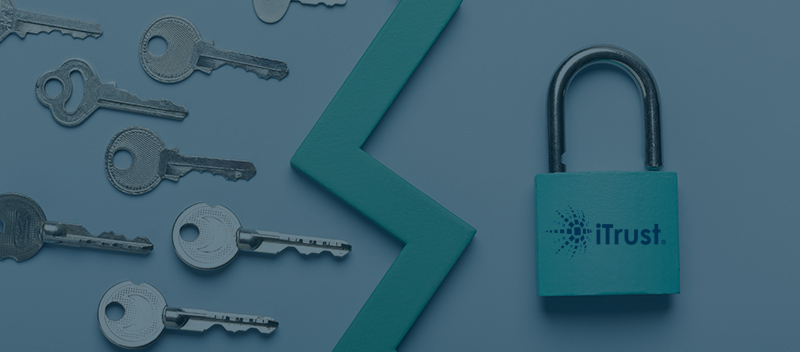
TL;DR Penetration testing simulates real-world attacks to uncover vulnerabilities in your systems, applications, and people before attackers can exploit them. This guide explains the pen test process, its key benefits, and the types of testing every organization should consider. Plus, discover how TrustNet’s AI-powered iTrust platform enhances penetration testing with deeper risk intelligence, combining expert insight with smarter remediation for faster, stronger cybersecurity outcomes. You’ve invested in firewalls, endpoint protection, and access controls. But how do you know they’ll hold up against a real attack? Penetration testing puts your defenses to the test. It simulates cyberattacks in a controlled, authorized environment to identify vulnerabilities before attackers do. These simulated threats reveal how an adversary could gain access, move laterally, or exfiltrate data, and they give your team the insights needed to fix the gaps. This approach is about understanding how exposed your systems really are, how fast your team can respond, and how prepared your organization is to handle a breach. In this article, you’ll learn: What penetration testing is and how it differs from a vulnerability assessment The five core phases of a pen test The key benefits, types, and impact on your overall cybersecurity posture. If you’re responsible for securing infrastructure, this guide will help you take smarter, faster action. What is Penetration Testing? Penetration testing is a controlled cybersecurity assessment where professionals simulate real-world attacks to uncover security weaknesses. It goes beyond surface-level scans. Pen testers actively mimic the tools, tactics, and procedures (TTPs) of malicious actors to test how your environment responds under pressure. Unlike vulnerability assessments, which only identify known issues, penetration tests attempt to exploit those vulnerabilities. The goal is to show how attackers could chain together flaws, bypass controls, and access sensitive systems or data. A complete pen test evaluates more than just technical configurations. It also probes human factors and internal processes. For example, testers may launch phishing campaigns or attempt social engineering to gain initial access. Effective penetration testing helps you: Understand how attackers think and operate Measure the effectiveness of current security controls Reveal blind spots in both systems and workflows Prioritize fixes based on real-world risk If you want to know how exposed your organization really is, a pen test delivers that clarity. Ready to See Where Your Security Stands? Our team of expert pen testers can simulate real-world attacks tailored to your environment. Get a customized penetration test that delivers actionable insights—fast. Talk to an Expert Key Phases of Penetration Testing A structured penetration test follows a repeatable, five-phase methodology that mirrors how real attackers operate. Understanding each phase helps your team evaluate both system resilience and incident readiness. The 5 Core Phases of a Penetration Test 1. Reconnaissance Attackers gather data on the target system using passive and active methods. This includes identifying IP ranges, DNS records, and open ports, laying the groundwork for targeted exploitation. 2. Scanning Tools like TrustNet’s iTrust can scan for known vulnerabilities. Testers map out exposed services, outdated software versions, and misconfigured settings. 3. Gaining Access Pen testers exploit vulnerabilities to gain control. They may use tools like Metasploit to deliver payloads, simulate brute-force attacks, or bypass authentication. 4. Maintaining Access Simulating a persistent threat, testers escalate privileges or install backdoors. This phase evaluates how long an attacker can remain undetected in your system. 5. Covering Tracks The tester removes evidence of the attack, clearing logs and evading detection, to mirror the behavior of advanced persistent threats (APTs). Together, these phases form a realistic and thorough cybersecurity assessment, helping your organization detect blind spots before they can be exploited. Benefits of Penetration Testing Even the most well-funded security programs can have blind spots. Penetration testing helps you uncover them before threat actors do. For IT managers and CISOs, it’s a proactive way to evaluate real-world risks. For business leaders, it delivers measurable cybersecurity improvement and peace of mind. Here’s how your organization benefits: Expose Security Gaps That Matter Identify exploitable weaknesses in networks, applications, and human workflows that traditional scans miss. Reduce Breach Risk with Real-World Testing Simulate active attack scenarios to see how your systems hold up and where attackers could break through. Prove Compliance with Confidence Satisfy audit requirements for PCI DSS, HIPAA, ISO 27001, and more with documented test results and remediation. Validate Your Defenses Under Fire Test how well your controls actually perform when targeted by adversary-grade techniques. Build Trust with Stakeholders Show customers and partners that you invest in meaningful, proactive cybersecurity measures. Penetration testing isn’t just a checkbox; it’s a strategic move that strengthens your entire security posture. Types of Penetration Testing The most effective penetration tests target specific systems, behaviors, and attack vectors. Choosing the right type depends on what you need to secure. Here are the most common types of penetration tests your organization should consider: Network Penetration Testing Evaluate the security of internal and external networks. Testers attempt to exploit misconfigured firewalls, exposed services, outdated protocols, and weak credentials. This test reveals how attackers could pivot through your infrastructure. Application Penetration Testing Examine web and mobile applications for flaws like SQL injection, cross-site scripting (XSS), broken access controls, and insecure APIs. Application pen tests help you catch vulnerabilities that directly expose customer data. Social Engineering Tests Simulate phishing, pretexting, and impersonation to assess how employees respond to manipulation tactics. These tests help you identify training gaps and measure your team’s resilience to real-world deception. Each test plays a critical role in a layered defense strategy. Use them together to close the gaps that technology alone can’t cover. Build a Security Posture That Learns and Adapts The importance of penetration testing lies in its ability to uncover real, exploitable risks before attackers do. It’s one of the most effective ways to identify vulnerabilities early, validate your defenses, and strengthen your organization’s ability to respond. But point-in-time testing isn’t enough in today’s dynamic threat landscape. That’s where TrustNet’s iTrust sets a new standard. Unlike conventional approaches, iTrust merges expert-led penetration testing with AI-driven cyber risk intelligence,
Data Breach: Prevent Unauthorized Access & Data Exfiltration
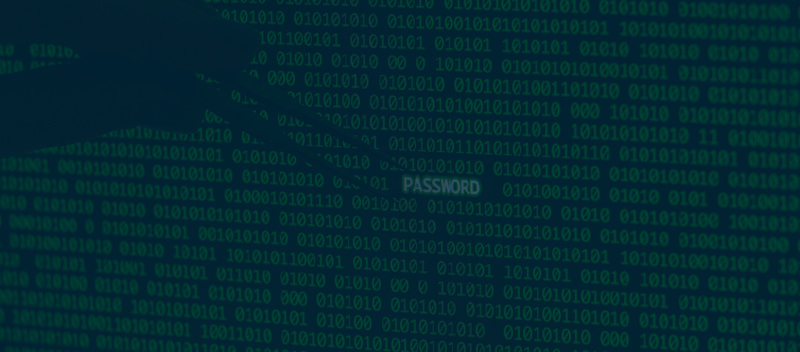
A data breach occurs when unauthorized individuals gain access to sensitive or confidential information. This may include personal identifiers, such as Social Security numbers and bank account details, or corporate data, such as financial records and intellectual property. Although “data breach” and “cyberattack” are often used interchangeably, not every cyberattack results in a data breach. A breach only occurs when data is accessed without authorization. Why Do Data Breaches Matter? Exposure of personal and corporate information to misuse. Financial losses, legal consequences, and reputational damage for businesses Identity theft, fraud, and privacy invasions for individuals Understanding the nature of data breaches is essential in protecting critical information. By recognizing their causes and implications, businesses and individuals alike can take proactive steps to strengthen their defenses and reduce risks. Learn more about our cybersecurity and compliance services. Talk to an Expert What is a Data Breach? Data breaches can have significant consequences, especially when sensitive data is compromised. These incidents typically fall into two categories: Internal errors: Negligence or mistakes by employees, such as misplacing devices, using weak passwords, or mishandling data. External attacks: Cybercrminal activities, including hacking, phishing, or malware attacks., to access private data. These incidents often lead to data exfiltration, where information is stolen and used or distributed without the owner’s consent. Regardless of the cause, a data breach represents an enormous threat to privacy, security, and trust. Common Causes of Data Breaches — Hacking and Malware Attacks Cybercriminals often exploit vulnerabilities using tailored hacking techniques or deploy malware to gain unauthorized access. One common tactic is phishing attacks, where victims are tricked into providing sensitive credentials or clicking on malicious links, compromising entire networks. — Insider Threats Employees with privileged access can sometimes become the source of data breaches. These insider threats can be intentional — such as leaking data for financial gain — or accidental, like mishandling sensitive information or falling prey to phishing schemes. Whether malicious or unintentional, insider actions pose a significant challenge to data security. — Physical Theft Unencrypted devices, such as laptops or external hard drives, when stolen, offer easy access to confidential data. a prevalent risk. If these devices are unencrypted, the confidential data stored within them can be easily accessed by unauthorized individuals, leading to significant data leakage. — Misconfigurations Misconfigurations in IT systems, such as cloud storage sets with public access or poorly implemented access controls, are another frequent cause. These errors can expose sensitive files, making them accessible to anyone who stumbles upon them — whether by accident or with intent. Consequences of a Data Breach Data breach consequences can be severe, creating ripple effects that impact an organization’s finances, reputation, and legal standing. Financial Losses Breaches can be incredibly costly. Legal fees and lawsuits from affected individuals increase these expenses. Operational disruptions, such as downtime during forensic investigations or system recovery, pile on even more costs. Financial loss from breaches can threaten the stability of any business. Reputational Damage A breach can tarnish an organization’s credibility almost instantly. Exposing sensitive customer data erodes trust, which can lead to clients and partners looking for safer alternatives. Rebuilding a reputation is neither quick nor guaranteed. Once the public’s faith is shaken, it casts a shadow over future growth. Legal Implications Falling short of compliance with established data protection laws carries legal risks that are hard to ignore. Regulations like GDPR and CCPA impose strict requirements, and failure to meet them can result in penalties, drawn-out legal battles, or enforced corrective measures. The legal impact of data breaches highlights the importance of following robust compliance practices. The broader impact of data breaches stretches beyond immediate effects. Financial stability, trust, and legal standing can all be compromised. Mitigating these risks requires proactive planning, vigilance, and a commitment to strong data security practices. Preventing Data Breaches Implementing robust data security, and best practices can significantly lower the risk of data breaches. Implement Strong Encryption Ensure all sensitive data is encrypted both during storage and whenever it is transmitted. Encryption protects against unauthorized access, ensuring that even if someone intercepts the data, it remains unusable without the correct decryption key. Implementing robust data security, and best practices can significantly lower the risk of data breaches. Key Details to Consider: 1. Use strong encryption algorithms such as AES-256 (Advanced Encryption Standard with 256-bit keys), which is widely recognized as an industry standard for robust encryption. 2. Prioritize proper key management by securely storing and rotating encryption keys regularly to prevent unauthorized access. Utilize tools such as Hardware Security Modules (HSMs) to protect and manage keys. Practical Example: A financial institution encrypts customer credit card data both in transit (e.g., during online transactions) and at rest (e.g., in database storage). Even if a database is compromised, encrypted data cannot be misused without the decryption key, which is safeguarded separately via HSMs. Use Multi-Factor Authentication (MFA) and Role-Based Access Controls Enhance access security through Multi-Factor Authentication (MFA), requiring users to verify their identity through additional steps, such as one-time codes or biometric verification. Pair this with Role-Based Access Controls (RBAC) to limit employee access based on job requirements. Specific Example of MFA Implementation: A cloud storage provider enables MFA by requiring users to log in with their password and then verify their identity through a one-time code sent via SMS or an authenticator app. This reduces the risk of unauthorized access, even if credentials are stolen through phishing. How RBAC Works in Practice: A hospital may use RBAC to grant doctors access to patient medical records but restrict billing staff to financial data only. System administrators track these permissions centrally, adjusting them as roles change within the organization. Using these approaches together minimizes the exposure of sensitive data, even during internal threats or accidental mishandling of credentials. Keep Software Updated Minimize security vulnerabilities by keeping all software, operating systems, and applications up to date. Unpatched software is a primary entry point for cyberattacks. Detailed Recommendation: Automate update installations wherever possible to eliminate delays caused by human oversight. Run
The Role of Automation in Security Compliance: A Practical Guide for IT and Security Leaders

TL;DR Compliance with regulations like GDPR, HIPAA, and PCI DSS is increasingly complex and resource intensive. Manual methods often lead to inefficiency, errors, and scaling issues for growing enterprises. TrustNet simplifies compliance with innovative solutions like GhostWatch and the Accelerator+ approach. By leveraging Advisory, Automation, and Audits and Assessments, organizations can streamline processes, reduce operational risks, ensure continuous regulatory alignment, and save 50-70% in costs. Managing compliance under stringent regulations like GDPR, HIPAA, and PCI DSS has become increasingly challenging. The complexity of these frameworks demands precision, yet traditional manual processes often fall short. They consume valuable resources, create bottlenecks, and leave organizations vulnerable to costly errors. Why Manual Compliance Falls Short Time-consuming processes lead to inefficiency. Higher risk of human errors undermines compliance. Scaling becomes impractical for growing enterprises. Automation offers a smarter approach to tackling these challenges. It streamlines procedures, ensures consistent adherence to regulations, and reduces operational risks. Organizations can simplify audits, improve ROI, and enhance efficiency across CISO compliance and IT compliance operations by implementing Compliance Automation. This guide equips IT and security leaders with actionable strategies to successfully integrate Security Compliance automation into their workflows. Learn how to meet regulatory demands quickly and accurately while empowering your business. Why Automation is Critical for Modern Security Compliance Achieving cybersecurity compliance demands streamlined processes, especially as businesses face increasing complexity in compliance requirements. Security automation addresses critical challenges, such as resource strain, human error, and adapting to evolving regulations, making it an indispensable tool for modern organizations. Mitigating Resource Drain Manual efforts in audits, evidence collection, and compliance monitoring are time-consuming and inefficient. For instance, a tech company can spend months manually reviewing hundreds of compliance checkpoints, delaying operational goals. By automating these tasks, the same company can reduce audit preparation to a few weeks, allowing employees to focus on core responsibilities like product innovation. Minimizing Human Error Manual data entry and tracking lead to inevitable mistakes that compromise compliance and risk management efforts. For example, a healthcare provider may face compliance risks due to misfiled policy documents. Automation tools can correct this by securely tracking and linking evidence, ensuring no critical detail is overlooked. Keeping Up with Regulatory Evolution Regulatory frameworks, such as NIST or ISO 27001, are constantly updated. Remaining compliant can overwhelm teams using traditional methods. Automation ensures seamless adaptation. A financial services organization, for example, can use an automated platform to integrate the latest regulatory templates, enabling faster updates and reducing operational downtime. Case Study: How TrustNet’s GhostWatch Helped OTS Streamline SOC 2 Compliance Open Technology Solutions (OTS), a fintech CUSO, effectively streamlined its SOC 2 compliance process by leveraging GhostWatch’s automation capabilities. Faced with time-consuming manual tasks such as evidence collection, controls mapping, and audit preparation, OTS turned to GhostWatch’s Managed Compliance services to centralize and automate these activities. This approach reduced audit time, allowing the team to focus on strategic priorities rather than repetitive, resource-intensive tasks. The automation also minimized human error, ensured adherence to evolving SOC 2 requirements, and improved the organization’s overall compliance posture. Explore how TrustNet’s GhostWatch can revolutionize your compliance process. Talk to an Expert Key Components of a Successful Compliance Automation Strategy A strong compliance management plan uses automation to increase efficiency and strengthen security. These components are essential for success: — Policy Automation Automation tools update security policies instantly when regulations change. For example, systems that adapt to updates like GDPR Article 30 adjust data processing records automatically. This eliminates manual errors and keeps compliance seamless. — Continuous Monitoring Real-time monitoring tools detect threats and track compliance across both cloud and on-premises systems. Solutions with security orchestration automation and response (SOAR) capabilities flag unauthorized activity immediately. For instance, automated alerts help organizations stop network intrusions before they escalate. — AI-Driven Risk Assessment AI in cybersecurity enhances risk management by predicting vulnerabilities. Generative AI simulates attacks, giving teams insight into weak points. For example, it can test system configurations to identify and prioritize the most critical risks, enabling timely action to prevent breaches. — Unified Reporting Unified reporting tools simplify audit preparation by consolidating compliance data. TrustNet’s GhostWatch Managed Compliance Services create audit-ready reports in minutes. For instance, businesses preparing for SOC 2 audits can quickly generate precise, detailed reports, saving significant time. By integrating these elements, organizations use IT compliance management to reduce manual effort, enhance security, and maintain full regulatory alignment. Automation ensures lasting efficiency and resilience. How to Implement Automation in Your Compliance Workflow Integrating compliance automation into your workflow can save time and improve efficiency. Follow these actionable steps to transition seamlessly: 1. Assess Current Gaps Start by identifying manual, time-consuming tasks that automation can handle better. Focus on repetitive processes like log reviews, policy updates, or access control checks, for example, instead of manually reviewing thousands of system logs, leverage compliance automation software to flag anomalies automatically. Pinpointing inefficiencies helps build a clear roadmap for improvement. 2. Choose the Right Tools Prioritize tools that integrate easily with existing systems like SIEM (Security Information and Event Management) or IAM (Identity and Access Management). Look for features such as scalability to grow with your business and AI-driven insights for smarter decision-making. Enterprise-grade platforms, like those with enterprise compliance automation, can help you centralize and streamline processes across departments. 3. Train Teams Automation only works when teams know how to use it. Provide targeted training on automated workflows, incident response protocols, and reporting dashboards. For instance, conduct hands-on workshops that familiarize employees with new software, ensuring they can respond confidently to alerts and maintain compliance efficiently. 4. Monitor and Optimize Once implemented, track performance through detailed dashboards. Set benchmarks for key compliance metrics, such as response times or audit completion rates, and analyze trends. Use this data to refine processes, ensuring continual improvement and adherence to evolving standards. A structured approach ensures your compliance automation software enhances operations, optimizes resources, and strengthens regulatory alignment across your business. TrustNet’s Automation Solutions for IT and Security Leaders TrustNet delivers cutting-edge technology to help organizations achieve scalable, secure, and compliant operations. Here’s how TrustNet empowers leaders
Cybersecurity Awareness: Training to Prevent Human Error

TL;DR Human error caused 95% of breaches in 2024. Cybersecurity awareness training teaches employees to recognize threats, reduce risky behaviors, and respond quickly. This guide covers what awareness means, how to implement it, and why TrustNet’s training platform is the all-in-one solution to build a security-first workforce. Human error contributed to 95% of data breaches in 2024, driven by insider threats, credential misuse, and user-driven errors, according to a new study by Mimecast. This statistic only means that without proper training, people become the weakest link. But with the right guidance, they can be your strongest defense line. Cybersecurity awareness is the foundation of a strong digital defense. It refers to educating individuals, especially employees, on recognizing threats, understanding risks, and taking informed actions to prevent breaches. In this article, you’ll learn: What cybersecurity awareness is and why it matters The core components of effective employee security training Practical steps for building a proactive, security-conscious culture Let’s dive into how cybersecurity training can turn awareness into action and risk into resilience. What is Cybersecurity Awareness? Cybersecurity awareness means understanding the risks, threats, and safe practices that help individuals protect digital systems and data. It’s more than knowing that cyberattacks exist; it’s about recognizing how and why they happen and what actions prevent them. Organizations use employee security training and cyber risk education to help teams develop this understanding. Cybersecurity awareness empowers people to make smarter decisions in real time, whether they’re opening emails, using corporate networks, or handling sensitive customer information. At its core, cybersecurity awareness teaches employees to: Identify common threats, such as phishing, malware, and social engineering tactics Understand their responsibility in safeguarding systems and data Apply security best practices, like using strong passwords and reporting suspicious activity Minimize risky behaviors that attackers often exploit This awareness turns each team member into a human firewall. When people understand the risks and take ownership of their role, organizations drastically lower the chance of breaches caused by everyday mistakes. Ready to Turn Awareness Into Action? TrustNet’s cybersecurity awareness training programs are designed with expert-led modules, real-world simulations, and continuous learning tracks to equip your team with the tools they need to spot threats and stop them. Talk to an Expert Today! Key Components of Cybersecurity Awareness Training Effective cybersecurity awareness training programs focus on practical knowledge and real-world scenarios. The best programs don’t just inform—they change behavior. Below are the core cybersecurity training components every organization should implement: 1. Phishing Simulations Phishing remains one of the most common entry points for cyberattacks. Simulated phishing exercises train employees to: Spot suspicious emails and malicious links Recognize spoofed sender addresses and urgent language Think critically before clicking or sharing information These simulations build real-world instincts that reduce risk. 2. Password Security Weak or reused passwords give attackers easy access. Training should cover: How to create strong, unique passwords The importance of using password managers How and why to enable multi-factor authentication (MFA) Reinforcing these basics helps close critical security gaps. 3. Social Engineering Awareness Attackers often manipulate people, not just systems. Employees must learn to: Identify emotional triggers and persuasion tactics Verify identities before sharing sensitive information Stay alert to pretexting and impersonation attempts Understanding the psychology behind attacks improves defense. 4. Incident Reporting Quick reporting limits damage. Training should encourage employees to: Report suspicious activity immediately Know where and how to report incidents Understand that reporting isn’t optional; it’s essential When employees act fast, organizations respond faster. Each of these components strengthens your workforce against evolving threats. When combined, they form the backbone of a proactive security culture. Benefits of Cybersecurity Awareness Training The benefits of cybersecurity awareness go far beyond individual knowledge—they directly strengthen your organization’s ability to detect and prevent threats. Here’s how effective training delivers results: 1. Reduces Human Error Human mistakes cause the majority of cyber incidents. Training helps employees: Avoid risky behaviors like clicking suspicious links or sharing credentials Understand how small actions impact broader security React quickly and correctly when faced with threats Reducing human error directly lowers the chance of breaches. 2. Improves Security Culture Awareness creates accountability. When employees take ownership of security: They stay alert to signs of phishing and social engineering They adopt safe practices as part of their daily work routines Security becomes a shared responsibility, not just IT’s job A strong culture makes security second nature. 3. Helps Prevent Data Breaches Trained teams make fewer costly mistakes. As a result: Sensitive data stays protected Attackers find fewer vulnerabilities to exploit Incident response becomes faster and more effective Prevention always costs less than recovery. 4. Supports Regulatory Compliance Frameworks like GDPR, CCPA, and HIPAA require organizations to protect data through proper training. Cybersecurity awareness programs: Align with legal obligations Reduce the risk of fines and investigations Demonstrate due diligence to auditors and regulators Compliance isn’t just a box to check, it’s a defense strategy. When you invest in training, you empower your team to take action that reduces cyber risks every day. How to Implement Effective Cybersecurity Awareness Programs Here’s how to implement cybersecurity awareness that sticks: 1. Use Engaging Methods Traditional slide decks don’t change behavior. Use interactive training methods like: Gamified learning modules Realistic phishing simulations Scenario-based role-playing Engagement boosts retention and helps employees respond confidently in real-world situations. 2. Conduct Regular Refreshers Cyber threats constantly evolve. Your training should too. Build continuous learning programs that include: Quarterly knowledge refreshers Monthly security bulletins Just-in-time microlearning after incidents Reinforcing knowledge over time keeps it top of mind. 3. Measure Effectiveness Training without metrics misses the mark. Track performance through: Pre-training/post-training assessments Simulated phishing click rates Reporting and response rates Use results to improve and personalize future training. When you combine engaging content, regular updates, and data-driven improvements, your team becomes your strongest security asset. Build a Workforce That Actively Defends Your Business Human error drives the majority of security breaches, but with the right training, teams can recognize threats early and respond with confidence. If you want to prevent human error
The Role of Managed Detection and Response (MDR) in Modern Cybersecurity

TL;DR Cyber threats are becoming faster, more targeted, and sophisticated, outpacing traditional security tools. Managed Detection and Response (MDR) fills this gap with proactive threat hunting, 24/7 monitoring, and expert-led incident response. MDR goes beyond alerts to identify and contain threats before they harm your business. Choosing the right MDR provider means securing advanced technology combined with skilled analysts to deliver fast, cost-effective protection and continuous improvement. Cyber threats are no longer random or opportunistic. They are fast, targeted, and highly sophisticated. Traditional security tools like firewalls, antivirus software, and even SIEM platforms struggle to keep up. Many of them only detect threats after the damage is done. Managed Detection and Response (MDR) offers a smarter solution. It delivers proactive threat detection, continuous monitoring, and expert-driven incident response. MDR cybersecurity goes beyond basic alerts. It helps identify, analyze, and contain threats before they impact your business. In this article, you’ll learn: What MDR is and how it works The key components of MDR services Why MDR is essential for modern threat defense How MDR providers operate and respond to threats What to look for when choosing an MDR provider How MDR pricing and subscriptions typically work If your security strategy is reactive or outdated, MDR can help you close the gap and stay ahead of modern threats. What is Managed Detection and Response (MDR)? MDR is a cybersecurity service that combines advanced threat detection technologies with 24/7 monitoring and human-led incident response. MDR providers deliver real-time visibility, active threat hunting, and rapid containment of cyber attacks, helping organizations detect and respond to threats before damage occurs. Unlike traditional Managed Security Service Providers (MSSPs), which often rely on alerting and basic log monitoring, MDR services go deeper. They don’t just notify. They investigate, analyze, and take action. MDR focuses on three core outcomes: Proactive threat hunting using behavioral analytics and threat intelligence Root cause analysis to understand how threats originated and spread Human-driven response to contain, remediate, and report incidents fast MDR fills the gap between automated security tools and the growing sophistication of today’s threats. See MDR in Action. TrustNet’s MDR solution delivers 24/7 threat detection, rapid response, and real-time visibility. Talk to an Expert Core Components of MDR Services The following components form the foundation of effective MDR security: 1. Threat Detection MDR services leverage real-time analytics, machine learning, and threat intelligence to identify suspicious behavior across your environment. This forms the foundation for proactive threat management. 2. Threat Hunting Security analysts proactively search for hidden or advanced threats that evade automated tools. They use behavioral analytics, threat intelligence, and forensic data to uncover malicious activity before it causes damage. 3. Threat Investigation and Analysis Once a potential threat is identified, analysts dig deeper using context-rich data to understand scope, tactics, and potential impact, informing precise and effective responses. 4. Threat Containment and Response When an attack is confirmed, MDR teams act fast to contain, eradicate, and remediate threats with minimal disruption. Speed and precision are key to limiting business impact. 5. 24/7 Monitoring (Endpoint Detection and Response Managed EDR tools continuously monitor endpoints (laptops, servers, mobile devices), detect anomalies, and support rapid remediation. Around-the-clock surveillance ensures threats are identified in real time. 6. Comprehensive Reporting Regular reports provide visibility into detected threats, response actions, and improvements in your security posture. These insights empower stakeholders to make informed, strategic decisions. 7. Seamless Integration Effective MDR services integrate smoothly with your existing security stack, including tools such as Network Security and Firewalls, Cloud Security Platforms, Intrusion Detection and Prevention Systems (IDS/IPS), Identity and Access Management (IAM) solutions, and Security Information and Event Management (SIEM) platforms. This interoperability ensures rapid deployment, minimizes disruption, and enhances visibility across your security ecosystem. Together, these core components help organizations detect, respond to, and recover from threats faster and with greater precision. Key Benefits of MDR in Modern Cybersecurity The main benefits of MDR include: — 24/7 Monitoring and Response MDR services provide continuous surveillance, reducing the time attackers stay undetected and limiting damage. — Expertise on Demand Gain instant access to skilled analysts and threat hunters. MDR lets you leverage top cybersecurity talent without hiring internally. — Reduced Alert Fatigue MDR filters and prioritizes security alerts, so your team focuses only on genuine threats, improving efficiency. — Faster Detection and Remediation Rapid identification and response shorten downtime and reduce data loss, keeping your business operations secure. — Cost-Effective Security MDR offers scalable protection without the high costs of building and maintaining a full in-house Security Operations Center (SOC). — Improved Compliance Robust monitoring and detailed reporting help meet regulatory requirements such as GDPR, PCI DSS, HIPAA, and others, simplifying audits and streamlining compliance efforts. Choosing MDR security strengthens your defenses with expert-driven, efficient, and cost-effective solutions tailored for today’s complex threat landscape. How MDR Works: Process and Workflow MDR managed detection and response services combine automation with expert analysis to provide comprehensive threat management. The workflow includes: 1. Data Collection MDR platforms collect telemetry from a wide range of sources—including endpoints, networks, cloud infrastructure, and log repositories—to create a unified security view. 2. Detection and Correlation Advanced analytics and correlation engines analyze collected data to identify suspicious activity across different environments and connect related events for context-rich detection. 3. Prioritization Automated tools and expert analysts triage and prioritize alerts, filtering noise to focus on the most critical threats that require immediate attention. 4. Proactive Threat Hunting Security experts continuously search for stealthy, emerging, or sophisticated threats that evade automated detection, using threat intelligence and behavioral analytics. 5. Response MDR teams act swiftly to contain and remediate threats in close coordination with your internal security teams, minimizing disruption and damage. 6. Root Cause Analysis After an incident, detailed forensic reviews uncover how the attack occurred, enabling precise remediation and helping prevent recurrence. 7. Continuous Improvement MDR providers deliver regular assessments, rule updates, and recommendations to adapt defenses to the evolving threat landscape and compliance needs. This structured process allows MDR services to deliver fast, effective protection while continuously enhancing your security
The Rise of AI-Driven Cyber Threats in 2025
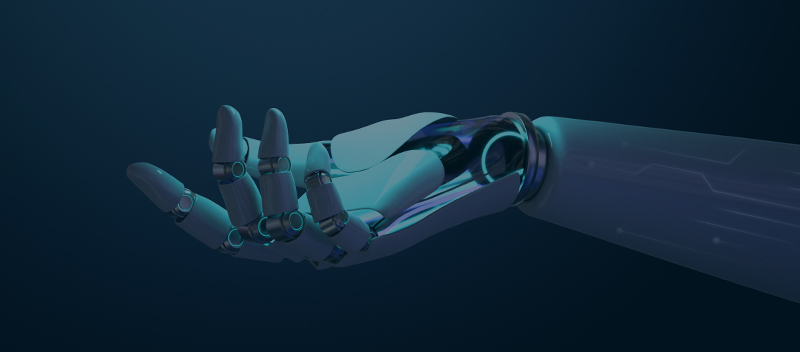
TL;DR In 2025, cybercrime is expected to cost $10.5 trillion annually. This article breaks down the most dangerous AI-powered attacks, their real-world impacts, and the best practices CISOs must adopt to defend against them. With expert advisory, automation tools like GhostWatch, and robust audits/assessments, TrustNet helps organizations stay secure, compliant, and ahead of AI-fueled threats. Artificial intelligence is empowering defenders and emboldening attackers. In the past year alone, 87% of organizations experienced AI-driven cyberattacks, including deepfake scams, adaptive malware, and automated phishing campaigns. As these threats escalate, global cybercrime damages are projected to reach $10.5 trillion annually. This article delves into the rise of AI-driven cyber threats, examining their types, associated risks, and real-world impacts. It also outlines actionable strategies and solutions to bolster defenses against these evolving challenges. The Double-Edged Sword: AI in Cybersecurity AI has become a powerful force on both sides of the cybersecurity battlefield. While it strengthens digital defenses, it also amplifies the speed, scale, and sophistication of attacks. How AI Strengthens Cyber Defense: Real-time threat detection: AI identifies anomalies across large datasets with unmatched speed. Implementing such systems has shown a 35% improvement in fraud detection rates. Automated incident response: Machine learning enables faster containment, mitigation, and breach detection time. Proactive threat intelligence: AI tools monitor attack trends, predict threats, and adapt defenses accordingly. How Attackers Weaponize AI: Adaptive malware: AI helps create polymorphic malware that mutates to bypass security tools. Deepfake social engineering: Cybercriminals use synthetic audio and video to impersonate executives or vendors. Scalable phishing: AI-generated emails mimic human tone and grammar, making attacks more convincing. Zero-day exploit discovery: AI automates vulnerability scans across systems, accelerating exploit timelines. According to a report from InfoSecurity Magazine, the Identity Theft Resource Center (ITRC) stated that in Q1, the financial services sector experienced the highest number of incidents, followed by healthcare and professional services. Cyber-attacks affected the majority of victims, totaling 90.4 million, with supply chain attacks impacting 3.4 million and system or human errors accounting for 104,000 cases. Additionally, 6,494 individuals were affected by physical attacks that resulted in the exposure of their personal information. AI adoption brings unmatched efficiency, but also significant risk. Organizations must pair AI innovation with strong governance, model validation, and threat monitoring to avoid enabling the very attacks they seek to prevent. Discover how TrustNet’s advanced AI-powered monitoring and automated risk assessment can keep your organization one step ahead. Talk to an Expert Types of AI-Driven Cyber Threats in 2025 Here are the top types of cybersecurity threats fueled by AI in 2025: AI-Supercharged Malware & Ransomware Attackers use AI to modify malware and ransomware on the fly, evading detection and maximizing damage. Automated Phishing & Social Engineering AI crafts highly convincing emails and voice phishing (vishing) attacks. In 2024, business email compromise attacks accounted for 73% of all reported cyber incidents. Adversarial AI Attacks Hackers exploit AI itself through prompt injection, data poisoning, and model manipulation to disrupt defenses or gain unauthorized access. Adversarial AI Attacks AI tools automate data theft and abuse of privileged access, heightening insider-driven breach risks. Supply Chain & Zero-Day Exploits AI accelerates vulnerability discovery and exploitation within complex supply chains, leaving organizations exposed. Generative AI Security Risks Large Language Models (LLMs) automate the creation of malicious code, fake identities, and misinformation, multiplying threats at scale. Understanding these threats helps organizations prioritize defenses and reduce risk in an AI-driven cyber environment. Real-World Data: The Evolving Threat Landscape Cybersecurity threats and vulnerabilities are growing rapidly, fueled by advances in AI. Industry data projects that the global cost of cybercrime will increase from $9.22 trillion in 2024 to $13.82 trillion by 2028 (Source: Statista). AI security risks are becoming more tangible. Studies from Harvard Business Review show AI-generated phishing emails deceive up to 60% of recipients, far surpassing traditional phishing success rates. Meanwhile, AI-crafted malware adapts continuously to evade signature-based defenses. Furthermore, the widening cyber skills gap compounds these challenges. Most organizations struggle to find professionals with deep expertise in both cybersecurity and AI. This shortage delays secure deployment, increases exposure to adversarial risks, and undermines oversight of AI systems. CISOs must act decisively to close this gap: Build internal training programs focused on AI risk management and secure ML operations Partner with academic institutions to shape curriculum and pipeline future-ready talent Engage managed security service providers (MSSPs) with proven AI security capabilities to augment internal teams A blended approach ensures coverage while internal expertise matures. Best Practices and Solutions: Defending Against AI Cybersecurity Risks Organizations must act decisively to protect their digital environments. Here are some best practices: 1. Deploy AI-Driven Defense Tools That Work Strengthen detection and response by implementing: Extended Detection and Response (XDR) to correlate activity across endpoints, networks, and cloud infrastructure Behavioral analytics to identify abnormal activity in user behavior and AI systems Security Orchestration, Automation, and Response (SOAR) tools powered by AI to triage alerts and automate incident response These platforms eliminate noise, reduce dwell time, and contain threats faster. 2. Power Up Threat Intelligence Stay ahead of attackers by integrating AI into your threat intelligence program: Detect attacker patterns across environments Predict emerging vulnerabilities with real-time analytics Automate threat scoring to prioritize action This approach improves signal fidelity and speeds up decision-making. 3. Secure the AI Supply Chain Protect every stage of the AI lifecycle: Scan and validate training datasets for poisoning attempts Secure model APIs and third-party integrations Monitor AI outputs continuously to detect drift, bias, or manipulation Adversaries target weak links in AI infrastructure. Eliminate them early. 4. Train Your Teams Against AI-Powered Threats Increase human resilience through practical awareness training: Expose teams to deepfake simulations and synthetic media Identify AI-generated phishing emails and social engineering patterns Launch simulated attacks to reinforce security hygiene A well-trained workforce stops threats that bypass technical controls. 5. Enforce AI Governance from Day One Define policies before deploying AI in critical workflows: Establish model validation, drift detection, and access control standards Limit exposure through least-privilege access to algorithms and datasets Enable continuous monitoring and real-time auditing Align internal governance practices with
TrustNet’s Comprehensive Cybersecurity Solutions: A Deep Dive
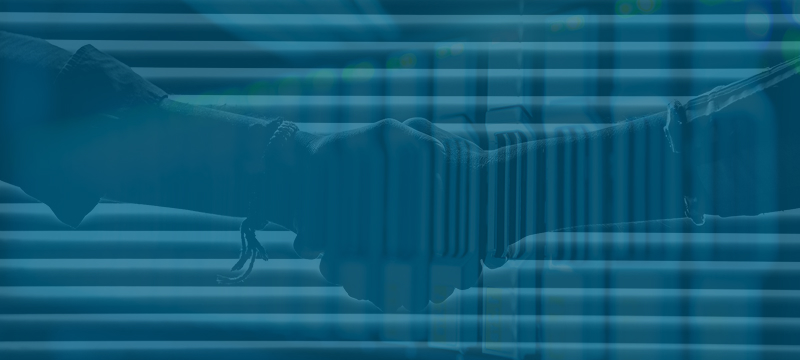
TL;DR TrustNet offers comprehensive, end-to-end cybersecurity solutions designed for modern businesses facing complex threats and compliance challenges. With 24/7 managed security services, cloud protection, risk-based compliance, and expert consulting, TrustNet empowers businesses to defend their digital environments, stay compliant, and scale confidently, all through a single trusted partner and our Accelerator+ approach. Cyber threats are growing more sophisticated, and compliance demands are rising. Modern businesses must defend complex digital environments while meeting strict regulatory requirements. IT and security leaders can’t afford fragmented solutions or slow response times. TrustNet stands out as a trusted managed security service provider (MSSP) and compliance partner. We deliver end-to-end protection through integrated cybersecurity solutions that are purpose-built for modern business needs. From data protection and compliance to threat detection and response, TrustNet helps organizations stay ahead of risk. This article covers: TrustNet’s core enterprise cybersecurity offerings The company’s approach to security and compliance Real business impact for clients across industries Explore how TrustNet helps you safeguard operations, stay compliant, and grow with confidence. TrustNet at a Glance: Experience, Reach, and Approach TrustNet has more than two decades of experience delivering enterprise cybersecurity services across highly regulated industries. We operate globally and support clients across North America, Europe, and Asia. As a managed service provider for cybersecurity and compliance, TrustNet is known for: Technical depth: Teams bring deep expertise in threat detection, incident response, cloud security, and compliance audits. Tailored solutions: Services are purpose-built for mid-sized to large enterprises with complex infrastructure and compliance needs. Client-focused delivery: Every engagement starts with a detailed risk assessment to align solutions with business goals. TrustNet is a trusted partner to organizations in healthcare, financial services, energy, and SaaS, where compliance and uptime are critical. With a reputation for transparency and hands-on execution, TrustNet delivers results that scale with growth. Not sure if your current security strategy is enough? Book a Demo with TrustNet’s cybersecurity experts today. We’ll assess your environment, identify potential gaps, and demonstrate how our managed services can help you stay ahead of evolving threats. Talk to an Expert Managed Security Services: 24/7 Protection and Rapid Response TrustNet delivers always-on protection through a comprehensive suite of cybersecurity services. Designed to defend modern enterprises against complex and fast-evolving threats, these solutions empower organizations to reduce risk, improve visibility, and respond with speed and confidence. Core Capabilities That Drive Resilience TrustNet’s managed service provider cybersecurity offerings include: SIEM and Log Management: Real-time monitoring, aggregation, and analysis of security logs across environments. Threat Management: End-to-end detection, investigation, and response across endpoints, networks, and cloud systems. Vulnerability Management: Proactive identification and remediation of security weaknesses before they are exploited. Incident Response: Rapid containment and recovery from cyber incidents using tested protocols and global threat intelligence. Network Security: Ongoing monitoring and defense of internal and external network traffic to block intrusions and maintain system integrity. These services are powered by GhostWatch, TrustNet’s unified platform for Managed Security and Managed Compliance. It is built to deliver automated, scalable solutions that reduce risks, improve efficiencies, and ensure regulatory adherence. Automated Compliance Management: Enforces and updates policies for GDPR, PCI DSS, and HIPAA; auto-collects audit evidence and runs continuous compliance checks. Real-Time Threat Detection: AI-powered analytics detect and prioritize threats instantly, offering automated response actions to reduce risk and response time. Risk-Based Remediation: Continuously assesses vulnerabilities, ranks them by impact, and launches auto-remediation to address critical threats first. Unified Compliance Dashboards: Real-time visibility into compliance across frameworks with auto-generated audit reports and performance metrics. Seamless Integration & Scalability: Connects easily with SIEMs, cloud environments, and on-prem infrastructure, ready to grow with your business. How It Starts: Tailored Onboarding and Risk-Based Deployment TrustNet begins every engagement with a comprehensive cybersecurity risk assessment and architecture analysis. This allows our team to map threats, identify vulnerabilities, and deploy defenses that align with the organization’s unique business needs and regulatory obligations. Real Results from Industry Leaders Calendly partnered with TrustNet to secure sensitive customer data across its global CRM platform. TrustNet implemented a NIST Risk Assessment and aligned its infrastructure with HIPAA, SOC 2, and ISO 27001 standards. ExperiencePoint leveraged TrustNet’s expertise to complete a successful SOC 2 Type 1 assessment. TrustNet guided them in evaluating existing protocols and implementing best practices for long-term compliance. Careington, a healthcare provider serving over 30 million customers, turned to TrustNet for PCI DSS compliance, risk assessments, penetration testing, and security awareness training. This partnership enabled Careington to secure its vast digital infrastructure, address vulnerabilities, and train employees to act as a frontline defense. TrustNet’s hands-on approach and advanced capabilities continue to help enterprises stay ahead of attackers while ensuring readiness for regulatory audits and business continuity. Cloud Security Solutions: Safeguarding Data in the Cloud TrustNet delivers advanced cloud security solutions that defend critical assets across public, private, and hybrid environments. Our cloud data security solutions include: Cloud Security Assessments Identify misconfigurations, vulnerabilities, and compliance gaps across AWS, Azure, Google Cloud, and hybrid infrastructures. Cloud Monitoring Continuously track cloud activity with real-time alerting, network intrusion detection, and packet inspection. Secure Configuration & Hardening Lock down assets using industry best practices and align security controls to frameworks like CIS Benchmarks. Compliance Automation Maintain continuous alignment with HIPAA, PCI DSS, GDPR, and other regulatory standards through automated policy checks and evidence collection. Why TrustNet for Cloud Security? Scalable Protection Whether you manage a single cloud or complex multi-cloud deployment, our services adapt to your growth and evolving threat landscape. Deep Integration GhostWatch integrates natively with your cloud provider’s tools, eliminating friction and maximizing visibility. Actionable Intelligence Our platform correlates logs, user activity, and threat data to deliver focused, high-priority alerts your team can act on fast. TrustNet ensures your cloud is not only operational but also secure, compliant, and ready for whatever comes next. Data Protection and Compliance: Meeting Regulatory Demands TrustNet helps businesses simplify data protection and compliance by aligning security practices with major industry frameworks. We support full lifecycle compliance for: PCI DSS SOC/SSAE18 HIPAA SOX ISO 27001 GDPR Custom compliance programs As a certified PCI Qualified Security Assessor (QSA), TrustNet has
Comparative Guide: TrustNet vs Other Cybersecurity Providers
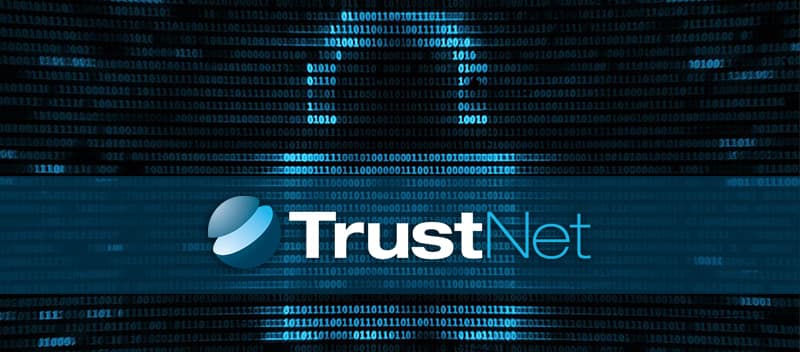
TL;DR TrustNet delivers enterprise-grade cybersecurity through a unified approach that blends managed security, automated compliance, and advanced analytics. Unlike niche providers, TrustNet offers full-spectrum protection, including cloud security, risk rating, and offensive testing, backed by award-winning platforms like GhostWatch and iTrust. With 20+ years of proven success, TrustNet is the trusted partner for CISOs, IT leaders, and compliance teams seeking measurable outcomes. Cyber threats are more complex, persistent, and costly than ever. As digital infrastructure grows, security leaders are under more pressure to choose the right cybersecurity partner. But not all cybersecurity service providers are created equal. With a flood of cybersecurity firms, solution providers, and managed service providers offering overlapping promises, decision-makers need more than marketing—they need clarity. This guide is built for: CISOs securing enterprise environments IT directors seeking dependable protection Procurement leaders evaluating value and risk Business executives aligning security with outcomes Use this as a clear, practical resource to navigate your options and select a cybersecurity partner that aligns with your operational goals and risk profile. Overview of the Cybersecurity Provider Landscape As cyber risks evolve, businesses now rely on specialized partners to protect infrastructure, data, and users. But each provider type brings different strengths. Three core categories dominate the landscape: Managed Security Service Providers (MSSPs): Deliver 24/7 monitoring, threat detection, and incident response at scale. Consulting Firms: Focus on audits, compliance, and risk management strategies. Technology Vendors: Offer platforms or tools for firewalls, endpoint protection, cloud security, and more. The demand for enterprise cybersecurity solutions continues to grow as attacks target organizations of every size. Buyers now prioritize end-to-end services, threat intelligence, and measurable outcomes. While TrustNet serves as a full-spectrum partner, many businesses still evaluate multiple cybersecurity providers with niche capabilities. This guide clarifies those differences, so you can select a solution that fits your operational goals, compliance needs, and internal resources. TrustNet’s Accelerator+ approach brings together Advisory, Automation, and Audit/Assessment, so you get expert guidance, scalable technology, and measurable results in one unified solution. Talk to an Expert TrustNet: Capabilities, Recognition, and Unique Value TrustNet stands out among top cybersecurity service providers by delivering integrated, enterprise-ready solutions built for measurable impact. Since 2003, TrustNet has partnered with mid-size and large enterprises to defend against threats, ensure compliance, and drive better security outcomes across industries. What We Deliver: Managed Security Services: Our GhostWatch platform delivers real-time monitoring, incident response, and threat intelligence tailored to your environment. Automated Compliance Assessments: Full-scope audits for PCI DSS, HIPAA, SOX, SOC, and other regulatory frameworks via our GhostWatch Managed Compliance solutions. Cloud Security: Protection across hybrid and multi-cloud environments with automated controls and continuous monitoring. Advanced Monitoring & Analytics: Early threat detection using behavioral analysis, anomaly detection, and machine learning. Recognized Expertise and Credentials TrustNet is backed by some of the highest credentials in the industry: PCI QSA, CISSP, CISA, HITRUST CCSFP, ISO 27001 Lead Auditor, and more 20+ years of experience supporting complex enterprise ecosystems Recognized in Forrester reports, SC Magazine, and Vendor Risk Management awards for leadership in risk management and compliance Built on Innovation: iTrust Platform TrustNet’s proprietary iTrust platform delivers: Automated cyber risk ratings Deep vulnerability discovery Machine learning-driven prioritization Real-time insights for proactive decision-making Global clients choose TrustNet for a reason: We don’t just offer cybersecurity solutions, we combine technology, compliance, and operational strategy to protect what matters most. Competitor Features and Focus Areas Feature / Provider Competitor A Competitor B TrustNet Managed Security ✖ ✔ ✔ Compliance Services Limited (SOC only) ✔ (HIPAA, PCI) ✔ (PCI, HIPAA, SOC) Cloud Security ✖ Limited ✔ Proprietary Risk Rating ✖ ✖ ✔ (iTrust) Offensive Security ✖ ✔ ✔ Awards / Recognition ✖ Some industry mentions ✔ (Forrester, SC Magazine, VRM) Industry Focus SMB only Mixed focus Mid / Large Enterprise Key Differentiators: Why Choose TrustNet? TrustNet delivers what today’s enterprises demand: complete protection, clear insights, and a proven partner. Here’s what sets us apart from other cybersecurity firms: iTrust and GhostWatch Platforms: Gain automated managed security and compliance, intelligent risk ratings and deep analytics powered by machine learning. End-to-End Compliance: Access full-spectrum regulatory expertise, including PCI, HIPAA, SOX, ISO, and SOC assessments. Proven Risk Reduction: TrustNet’s award-winning vendor risk management platform helps reduce breaches and compliance failures at scale. Enterprise-Ready Solutions: We tailor cybersecurity solutions for businesses of all sizes, scalable, flexible, and aligned to your growth. Dual-Defense Strategy: We lead in both proactive defense and offensive security testing, giving your organization a full-circle security posture. Two Decades of Impact: Since 2003, TrustNet has protected enterprise assets with unmatched reliability and results. Make the Right Choice in Cybersecurity Choosing the right cybersecurity provider directly impacts your ability to stay secure, compliant, and resilient. You need more than a vendor, you need a partner with proven expertise, advanced technology, and a track record of real results. TrustNet’s Accelerator+ approach provides a unified strategy that combines Advisory, Automation, and Audit/Assessment, ensuring your security and compliance programs remain effective, efficient, and audit-ready. Take the next step: Request a consultation Schedule a personalized demo Get an expert-led audit of your current security posture
Cyber Hygiene: Best Practices for Employees
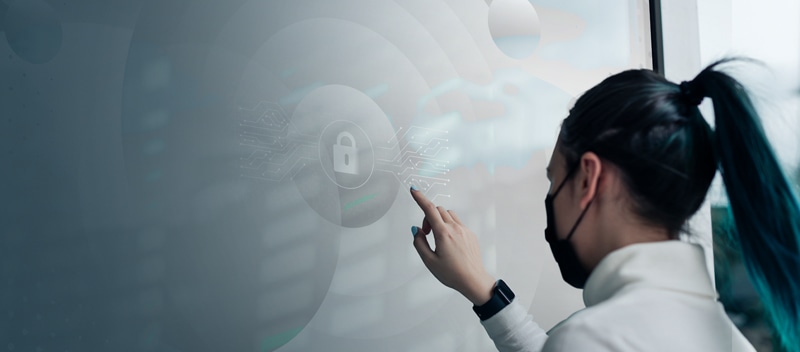
TL;DR Cyber hygiene refers to everyday practices that ensure the security and safety of digital systems, networks, and data. Adopting strong cyber hygiene reduces the risk of cyberattacks, including phishing, malware, and data breaches. Regular password updates, device security, and awareness of phishing attempts are key. Employees at every level play a vital role in protecting company data and creating a security-conscious culture. Cyber hygiene refers to the routine practices and steps individuals and organizations take to maintain the health and security of their devices, networks, and data. Much like personal hygiene, these practices are essential for preventing infections, in this case, cyber threats like malware, phishing, and ransomware. For instance, in 2024, over 20 school districts on Long Island experienced cybersecurity breaches, compromising the personal information of more than 10,000 students. Experts highlighted the challenge of maintaining robust cybersecurity due to limited resources and a significant role of human error, such as phishing and fake login pages, which accounted for nearly 45% of the breaches. (Source: nypost.com) This guide is built for employees at all levels, from new hires to IT managers. You’ll learn: What cyber hygiene is and why it matters Real-world risks of neglecting cybersecurity hygiene A practical checklist of habits to keep company data secure Use this article to take control of your digital safety, reduce risk, and help build a culture of cybersecurity awareness across your organization. What is Cyber Hygiene and Why is it Important? Cyber hygiene refers to the routine practices and steps individuals and organizations take to maintain the health and security of their devices, networks, and data. Much like personal hygiene, these practices are essential for preventing infections, in this case, cyber threats like malware, phishing, and ransomware. When teams neglect cybersecurity hygiene, they create vulnerabilities that attackers can exploit. These breaches can lead to: Data loss or theft Financial damage Legal consequences Reputational harm Even one careless click can open the door to ransomware or credential theft. Employees play a crucial role in protecting their organization’s digital assets. Every team member, from interns to executives, acts as a frontline defender against cyber threats. By adopting strong cyber hygiene practices, employees help reduce risk and build a culture of cybersecurity awareness across the company. Effective cybersecurity starts with daily habits. When everyone follows them, the organization stays safer, stronger, and more resilient. Need Help Embedding Cyber Hygiene in Your Workplace? TrustNet helps organizations build a strong security culture from the inside out. Talk to an Expert Essential Cyber Hygiene Best Practices for Employees Developing strong cyber hygiene practices helps employees protect their accounts, devices, and the organization’s overall security posture. Below is a practical cyber hygiene checklist every employee should follow: Use Strong, Unique Passwords Create complex passwords for each account using a mix of letters, numbers, and special characters. Avoid password reuse. Enable multi-factor authentication (MFA) to add an extra layer of protection. Keep Software Updated Install updates for your operating system, browsers, applications, and antivirus software as soon as they become available. Cybercriminals often exploit known vulnerabilities in outdated systems. Stay Alert for Phishing Avoid clicking on suspicious links or downloading unexpected attachments. Always verify questionable emails with your IT team. Secure Your Devices Lock your screen when you leave your desk. Use company-approved VPNs when working remotely. Avoid using public Wi-Fi to access sensitive data or work systems. Handle Data Responsibly Lock your screen when you leave your desk. Use company-approved VPNs when working remotely. Back Up Critical Data Regularly back up essential files using secure, IT-approved solutions. This minimizes downtime and data loss in the event of ransomware, hardware failure, or accidental deletion. These practices form the foundation of daily cybersecurity hygiene and help build a security-aware workplace. Building a Culture of Cybersecurity Awareness Cyber threats are constantly evolving, making ongoing education and training crucial for employees at all levels. Here’s how to foster a culture of awareness: 1. Ongoing Cybersecurity Awareness Training Cybersecurity awareness training should be continuous, not a one-time event. Regular sessions ensure employees remain informed about current threats, security practices, and potential risks. It also encourages vigilance in recognizing suspicious activities and adhering to company policies. 2. Benefits of a Cybersecurity Awareness Program Participating in a cybersecurity awareness program offers several advantages: Simulated Phishing Tests: These mock scenarios help employees recognize phishing attempts and learn how to respond. Workshops and Seminars: In-person or virtual workshops provide employees with a deeper understanding of best practices, ensuring they stay proactive. 3. Encourage Reporting Suspicious Activity Employees should feel empowered to report unusual activity without hesitation. By reporting potential threats, individuals contribute to the organization’s overall security posture. Employees should also be encouraged to ask questions if they are unsure about security procedures. 4. Reinforcing Cyber Hygiene through Leadership Managers play a crucial role in reinforcing cyber hygiene. Regular reminders, such as short security briefings or weekly tips, help maintain focus on best practices. Recognizing employees who follow proper security procedures can also motivate others to do the same. By committing to cybersecurity awareness, both employees and managers create a proactive environment where everyone contributes to maintaining a secure workplace. FAQs and Common Misconceptions Which of the following are good cyber hygiene practices? A: Good cyber hygiene practices include using strong, unique passwords, enabling multi-factor authentication, keeping software updated, and being cautious with suspicious emails or links. How often should I update my passwords? A: It’s recommended to update passwords every 60–90 days. However, if you suspect a breach or if a service has been compromised, update them immediately. What should I do if I suspect a phishing attempt? A: If you suspect a phishing attempt, do not click any links or open attachments. Report it to your IT team immediately and delete the suspicious message. Common Misconceptions “Antivirus alone is enough.” Antivirus is just one layer of defense. Effective cybersecurity requires multiple measures, including strong passwords, encryption, and user awareness. “Cybersecurity is only IT’s responsibility.” Cybersecurity is everyone’s responsibility. Employees play a vital role in maintaining safe digital practices, reporting suspicious activities, and following security


